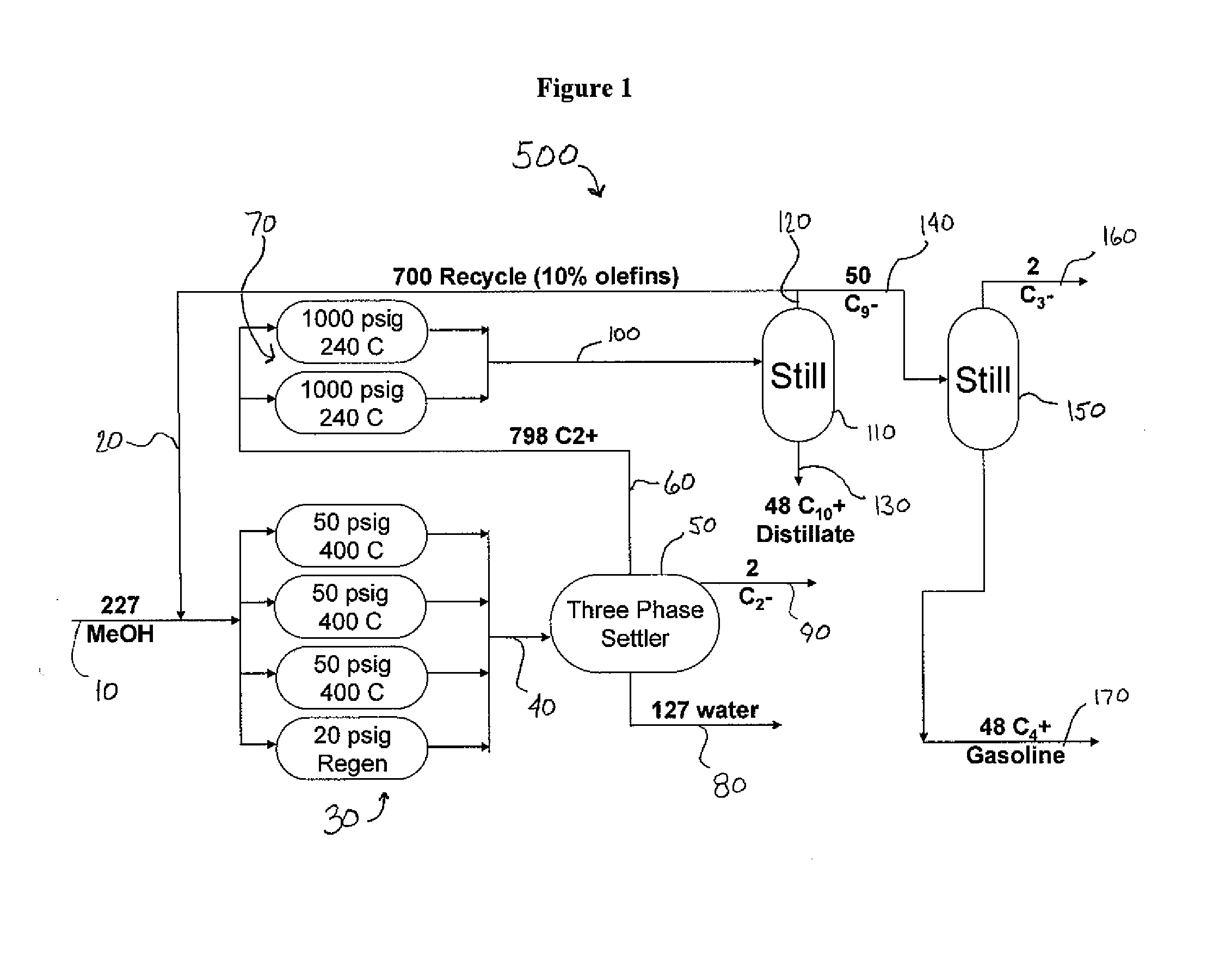Process and system to convert methanol to light olefin, gasoline and distillate
- Summary
- Abstract
- Description
- Claims
- Application Information
AI Technical Summary
Benefits of technology
Problems solved by technology
Method used
Image
Examples
Embodiment Construction
Definitions
[0012]As used herein, the term “produced in an industrial scale” refers to a production scheme in which gasoline and / or distillate end products are produced on a continuous basis (with the exception of necessary outages for plant maintenance) over an extended period of time (e.g., over at least a week, or a month, or a year) with the expectation of generating revenues from the sale or distribution of the gas and / or distillate. Production at an industrial scale is distinguished from laboratory or pilot plant settings which are typically maintained only for the limited period of the experiment or investigation, and are conducted for research purposes and not with the expectation of generating revenue from the sale or distribution of the gasoline or distillate produced thereby.
[0013]As used herein, and unless specified otherwise, “gasoline” or “gasoline boiling range components” refers to a composition containing at least predominantly C5-C12 hydrocarbons. In one embodiment,...
PUM
| Property | Measurement | Unit |
|---|---|---|
| Temperature | aaaaa | aaaaa |
| Temperature | aaaaa | aaaaa |
| Temperature | aaaaa | aaaaa |
Abstract
Description
Claims
Application Information
 Login to View More
Login to View More - R&D
- Intellectual Property
- Life Sciences
- Materials
- Tech Scout
- Unparalleled Data Quality
- Higher Quality Content
- 60% Fewer Hallucinations
Browse by: Latest US Patents, China's latest patents, Technical Efficacy Thesaurus, Application Domain, Technology Topic, Popular Technical Reports.
© 2025 PatSnap. All rights reserved.Legal|Privacy policy|Modern Slavery Act Transparency Statement|Sitemap|About US| Contact US: help@patsnap.com

